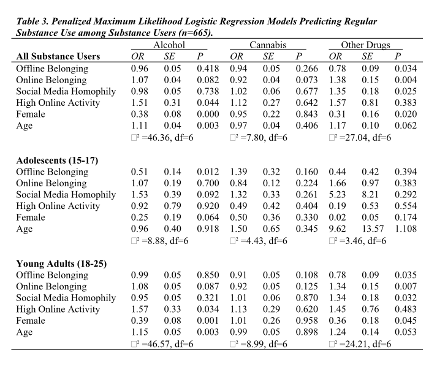“Online Peers and Offline Highs: An Examination of Online Peer Groups, Social Media Homophily, and Substance Use” has now been accepted by the Journal of Psychoactive Drugs. The work notes that today’s youth spend more time interacting with distal peer groups through online communities and social media and have increased access to online drug cultures. While this should have important implications for substance use, research on the relationship between online peer groups and psychoactive substance use is still emerging. The study employs a nationally representative sample of youth age 15-25 years old in the United States (n=1212) to examine whether online peer group identification and social media homophily predict substance use. Utilizing bivariate and multivariate analyses, results indicate that online belonging and social media homophily are significant predictors of some forms of substance use. Although these factors were not significant predictors of regular marijuana or alcohol use, they were significant predicted of regular stimulant and opioid use among those who had already initiated substance use. This is potentially concerning as it suggests that online peer groups may promote progression into more problematic forms of substance use. Prevention and intervention strategies should consider social media campaigns to target at-risk youth. The study was lead by Atte Oksanen and Bryan Miller. Cory Lowe, Markus Kaakinen, Iina Savolainen, Anu Sirola, Noora Ellonen, and I coauthored the manuscript.

